The Queen’s Gambit is a riveting drama about chess, romance, and addiction that has become an unlikely hit for Netflix.
The 7-episode series centers on Beth Harmon (Anya Taylor-Joy), a female chess prodigy in the 1960s who struggles to overcome her personal demons as she becomes a global star.
The Story’s Origin
The series is based on the novel by Walter Tevis, who also wrote The Hustler, The Color of Money, and The Man Who Fell to Earth. The Queen’s Gambit was published in 1983, a year before Tevis died. Scottish writer-producer Allan Scott bought the rights to adapt the novel in 1983, but the project had been tied up in development for nearly 40 years.
Interestingly, Heath Ledger was supposed to make his directorial debut with a film version of The Queen’s Gambit that would have starred Ellen Page as Beth. Sadly, Ledger died just before production was to begin and the project was stalled for another decade.
The novel was finally adapted into a series by longtime rights-holder Allan Scott, whose wide-ranging film career includes Don’t Look Now, The Preacher’s Wife, and The Witches, and writer-producer Scott Frank (Logan, Out of Sight, Minority Report).
The Storytelling Challenge of The Queen’s Gambit
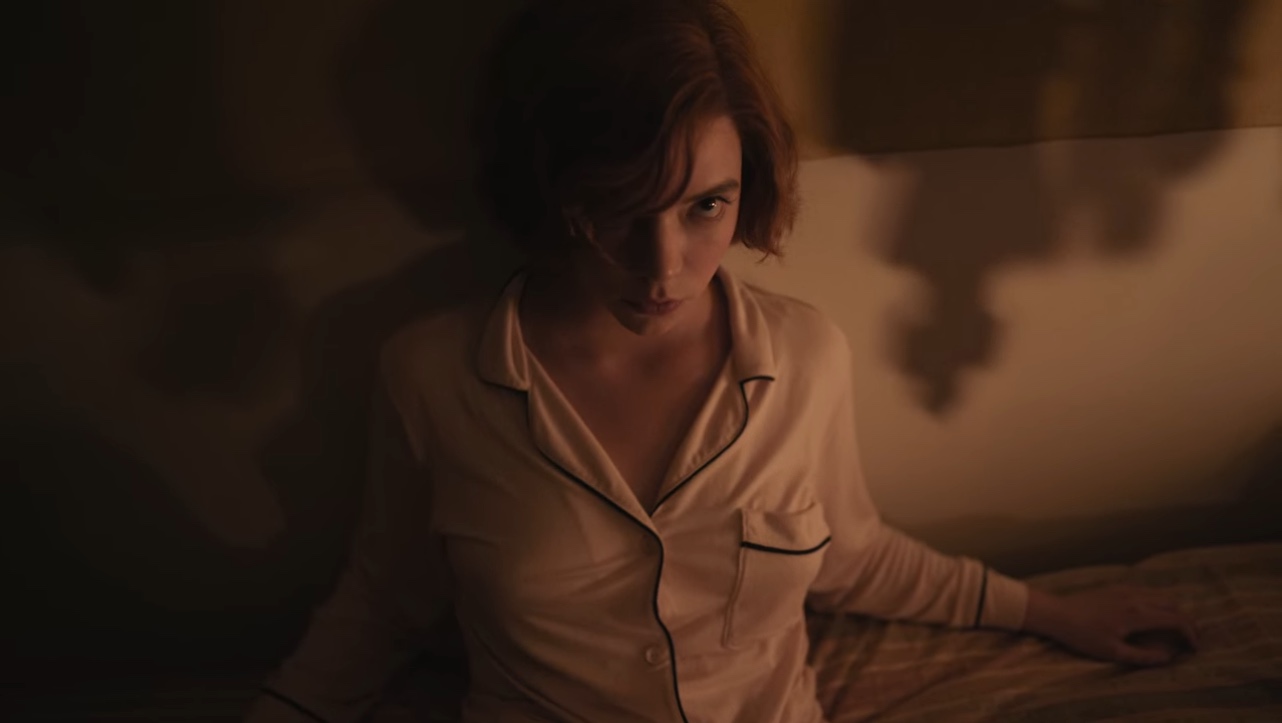
How do you get people hooked on a story about chess, especially if they’ve never played?
Telling a tense, gripping, and visual story about the nuances of chess — which is often slow, methodical, and internal — was no easy feat. Yet one the most impressive aspects of The Queen’s Gambit is that it can be fully understood and enjoyed even by viewers who have never played the game.
The key to making Beth’s story so easily accessible is to convey some very complex information through more subtle and quickly digestible storytelling tricks.
In this case, Scott and Frank use symbolism, camera moves, visual cues, character reactions, and well-timed bite-sized exposition to help the audience along. This gives the audience just enough information to understand what they need to know in order to appreciate the point of each scene without feeling overwhelmed by the rules of the game.
Also, just like chess strategy itself, the show’s storytelling often uses seemingly minor moves introduced early to set up major payoffs later. This technique trains the audience of The Queen’s Gambit to pay attention to every detail along the way, because their close attention is often rewarded.
Here are some of the clever storytelling tactics that make The Queen’s Gambit a hit.
*** WARNING: MINOR SPOILERS AHEAD for The Queen’s Gambit. ***
Redheads Have More Fun
Beth is a redhead in the show, which is a change from the book, where she’s a brunette.
Why the change?
In this video interview about the making of The Queen’s Gambit, Anya Taylor-Joy reveals that her first request after being cast was that Beth should be a redhead, because she wanted Beth to “stick out like a sore thumb” everywhere she went.
It works. Beth’s now-signature red hair makes her pop off the screen, helps her stand out in earth-toned crowd scenes, and creates a natural contrast with every character she meets. It also serves as a visual depiction of her bold, hot-headed, unpredictable nature.
(Plus, as fashion fans know, Beth’s celebrated wardrobe also has its own meanings, too.)
Hooking Us with a Mystery (or Two)
It’s notable that the very first thing we learn about Beth is NOT that she’s a chess prodigy.
It’s that she’s a fuckup.
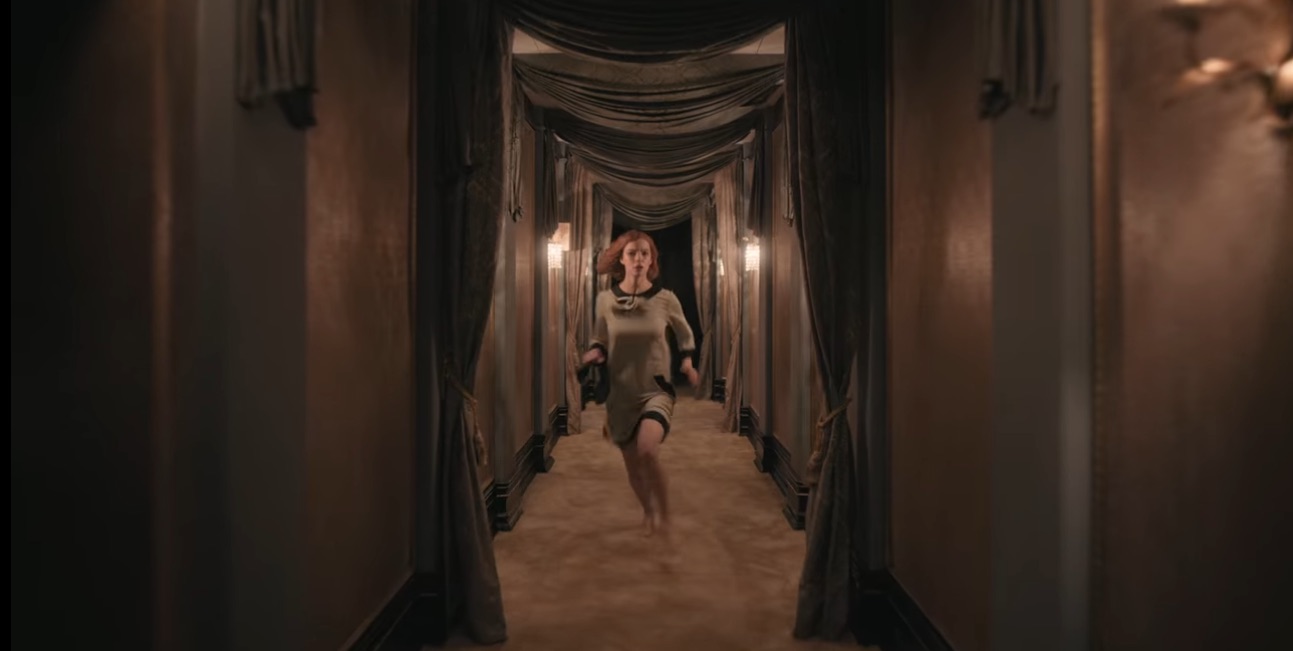
The first scene in the series introduces us to Beth while she’s running so late for her next match that a hotel employee is banging on her door, awakening her from having passed out in a bathtub (?!), and causing her to race barefoot through an elegant hotel on her way to a momentous chess match with… whom, exactly?
We’re not quite sure. She and her opponent stare at each other, and at this point we have no idea who he is, what he means to her, how she feels about him, or what (if anything) they mean to each other.
Nor do we know who’s sleeping in her hotel bed. That’s a whole other question.
Introducing minor mysteries in the very first scene starts us off with an intriguing soap opera hook. With this opening, even a casual audience now has a plot-based reason to ask “what happens next?”
Outsiders Need Explanations
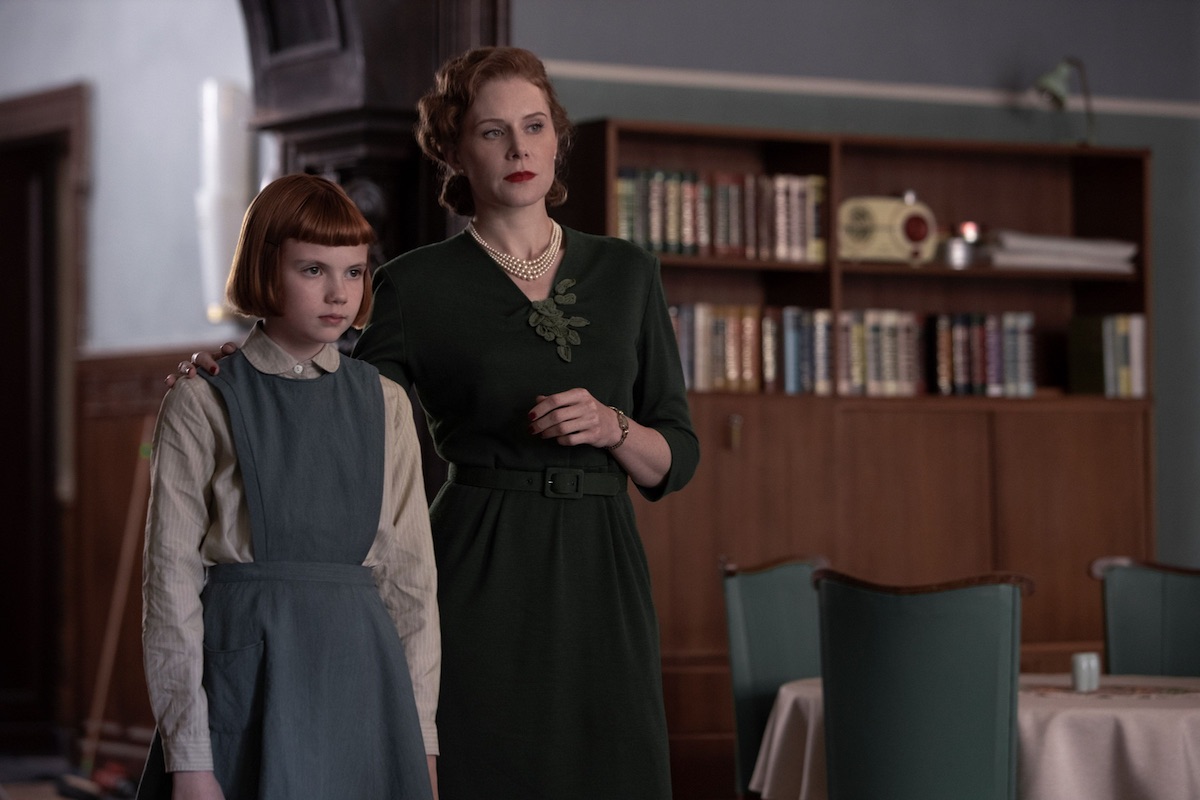
Beth is orphaned in the first episode of The Queen’s Gambit, and she’s sent to live at the Methuen Home, an orphange for girls her age. When she arrives, Mrs. Deardorff (Christiane Seidel) gives her a tour of the facility. Explaining the rules of the orphanage serves double duty, because it educates us right alongside Beth. We’re newbies in this world together.
The same pattern occurs when Beth discovers chess and begins to play. At first she figures out the basics, and this gives viewers who have never played chess before an opportunity to learn the basics too.
But afterwards, as Beth quickly rises through the ranks of competitions and tournaments over the next few years, she continually finds herself in new situations that require more knowledgeable characters to explain newly-relevant rules to her (and to us).
By making Beth a constant outsider, The Queen’s Gambit has a perpetual excuse to spoon feed the audience information at just the right pace. And when a new piece of information is discussed, you can bet it’s going to matter down the line.
The Symbolic Foreshadowing of Mr. Shaibel
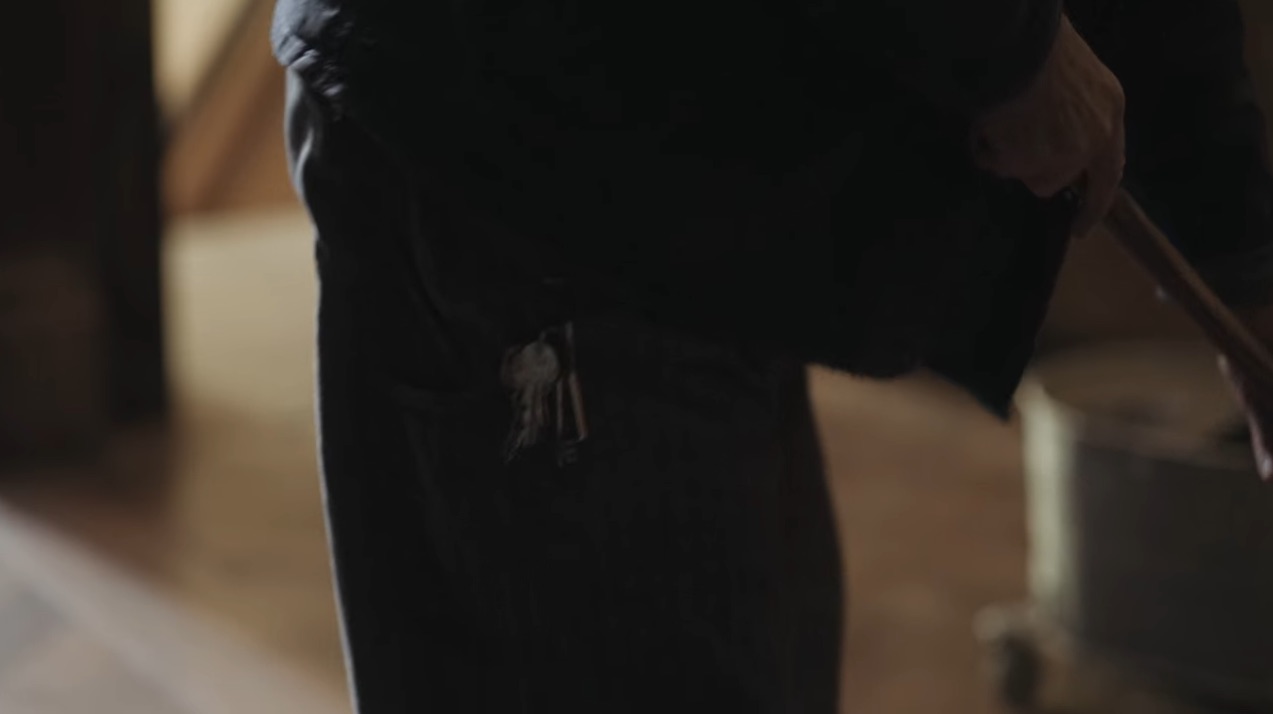
When Beth first sees Mr. Shaibel (Bill Camp), the janitor at the orphanage, she’s having a bad reaction to her very first tranquilizer. She stumbles down the stairs and sees a blurry man mopping the floor. No details about him are clear, except one:
The shot focuses on the ring of keys around his belt.
That’s because Mr. Shaibel represents the key to Beth’s future.
In the coming weeks, he’ll teach her how to play chess, and together they will realize that she is a uniquely gifted chess prodigy. Mr. Shaibel becomes the father figure that Beth sorely needs at this point in her life, as well as the mentor she needs as she begins her hero’s journey.
But Mr. Shaibel also unlocks the other facet of her personality that Beth needs to master even more than chess, and he does it by…
Visualizing the Theme
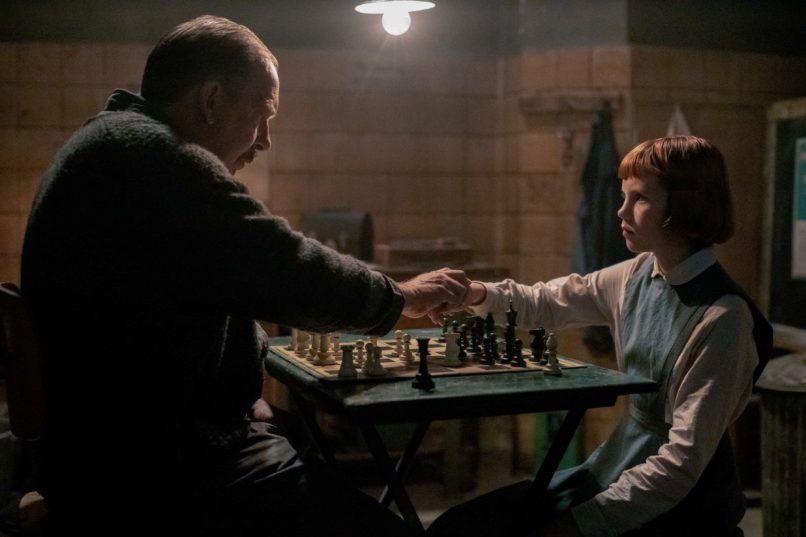
Early in her chess lessons, Beth makes an error and loses her queen. Mr. Shaibel explains that her next move is to resign. That’s not an official rule of the game, but rather a convention of good sportsmanship.
But Beth refuses to resign. Instead she throws a tantrum, and Shaibel tells her to leave. Then he locks her out of the basement for several days, depriving her of the ability to play chess with him, which is the only joy she’s found in the orphanage.
Why does he engage in this act of tough love?
Because, as Beth’s surrogate father figure, he knows that if she doesn’t start learning how to manage her emotions and control her impulses now, she won’t just have trouble winning at chess; she’ll have trouble winning at life.
This moment encapsulates the overarching theme of The Queen’s Gambit: Beth’s biggest obstacle is never going to be learning how to master the game of chess; it’s learning how to master herself.
Unfortunately, this is a lifelong lesson that Beth won’t learn easily.
Graduating to More Complicated Chess Games

When teenaged Beth competes in her first real chess tournament in Kentucky, she’s never played an official tournament before. The rules of engagement have to be explained to her (and to us). But by now we already know that Beth is an exceptionally good player, so we don’t need to see every move on the board.
What we do need to see are her opponents’ reactions.
For a fantastic shot-by-shot breakdown of how well this technique works, check out this great video from Thomas Flight that analyzes the cinematography of Beth’s match against Harry Beltik (Harry Melling).
Throughout The Queen’s Gambit, the actors who portray Beth’s competitors do an exceptional job of conveying various stages of emotions during their games with her, and all without a word. From overconfidence to surprise to uncertainty to exasperation, their faces tell us everything we need to know.
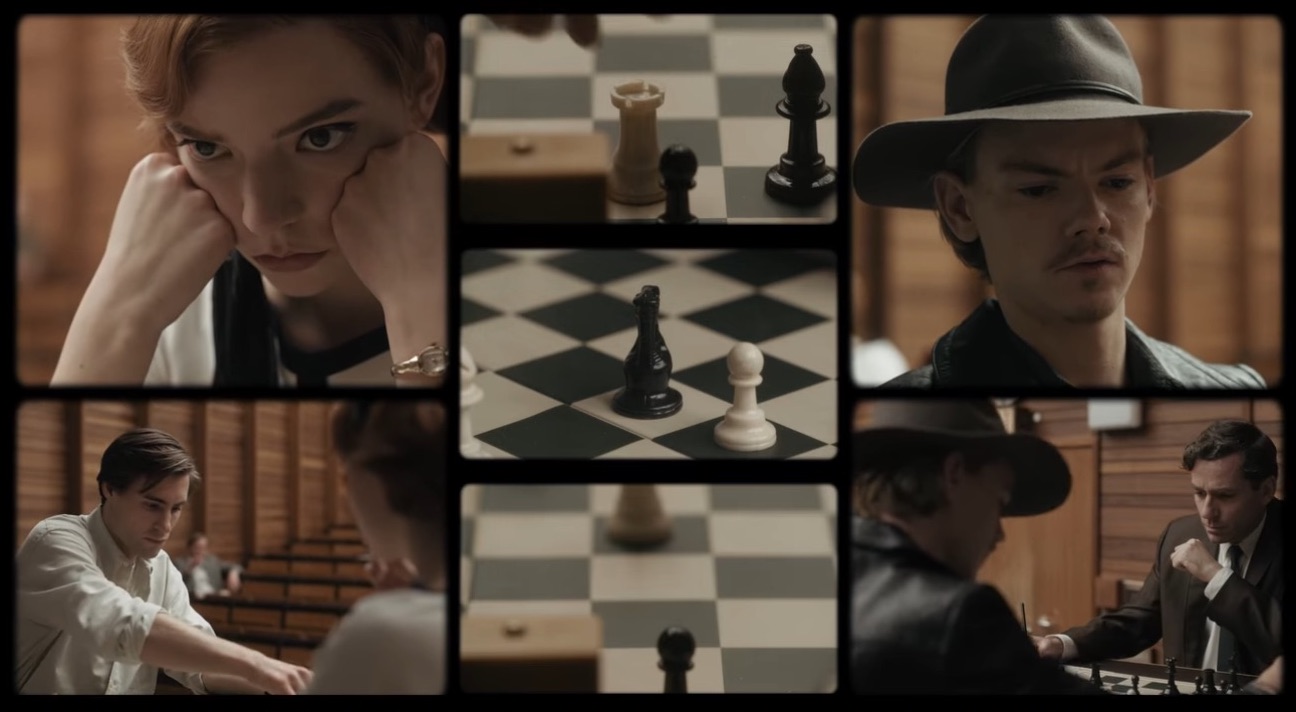
By the time Beth gets to the U.S. National Championship in Ohio, we’ve seen her play so many matches in previous tournaments that the showrunners can take a shortcut. Not only can they skip the specifics of each game, but they can skip entire matches.
That’s because everything that happens in Ohio is just a formality. The main attraction is the existential battle of wills between Beth Harmon and Benny Watts (Thomas Brodie-Sangster), two upstart rivals in a race for the national title. Showing us anything more than a cursory sweep of their lower-level matchups would draw unnecessary attention to minor story beats, so they’re dispensed with in a montage that keeps us focused on the mind games that really matter between Beth and Benny.
Calling Attention to Future Twists
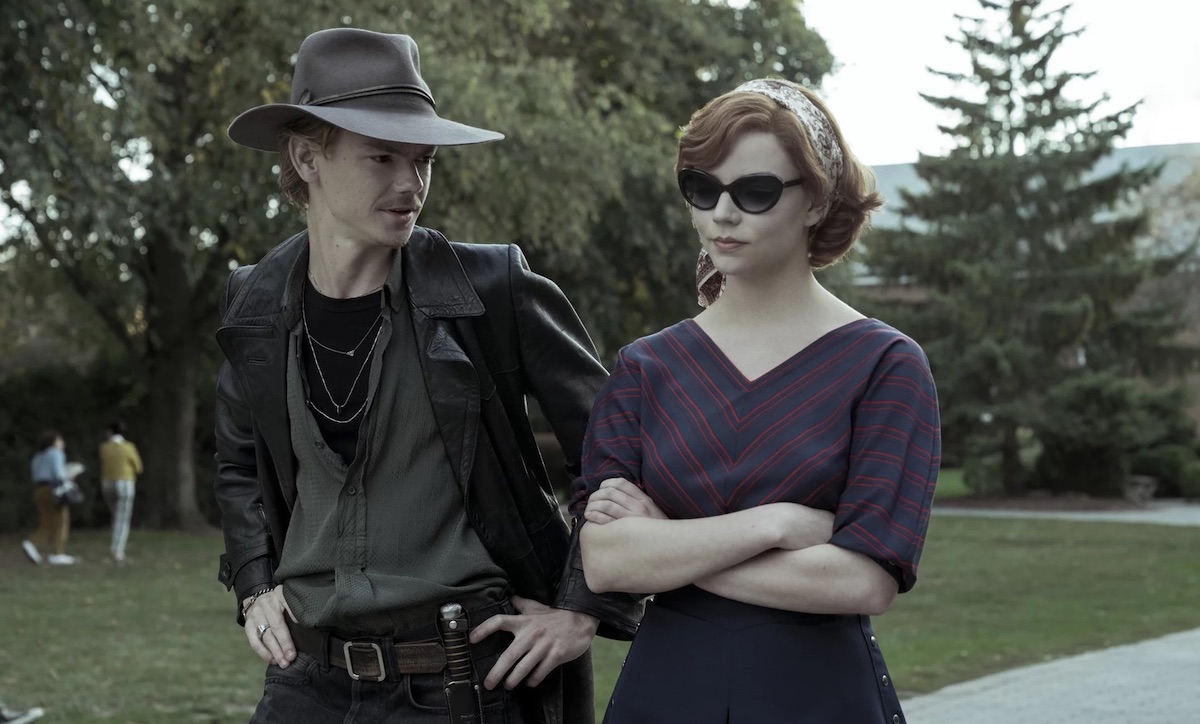
Certain plot points in The Queen’s Gambit do require an understanding of the rules of chess. When that’s necessary, the writers spotlight those facets of the game either through action or character-centric dialogue.
For example, when Beth and Benny are still deciding how they feel about each other, Benny shows off how much he knows about how the Russians — whom Beth is intimidated by — play chess. He mentions how the Russians work together during adjournments, which is a tournament situation that Beth has yet to experience for herself.
By calling attention to adjournments as a focal point for Beth (and for us), the show is sending us a clear sign that an adjournment will be pivotal to the plot down the stretch. But we don’t realize this at the time because — like Beth — we’re paying too much attention to Benny to notice.
The Exchange of Power
Throughout The Queen’s Gambit, camera angles play an important role in establishing who’s really in charge at any given moment.
For example, Beth is often dwarfed by her surroundings, especially early on, which reinforces her outsider POV. But as she gets more comfortable, we get more closeups.
This same technique is used to depict shifting balances of power during conflicts. While most of it occurs during chess matches, the same approach is also used in other kinds of power struggles.
In this scene when Beth is arguing with her adoptive father Allston Wheatley (Patrick Kennedy), they begin at nearly balanced perspectives, with Beth filmed from slightly above and Allston filmed from slightly below, which implies that he holds the power in the scene.
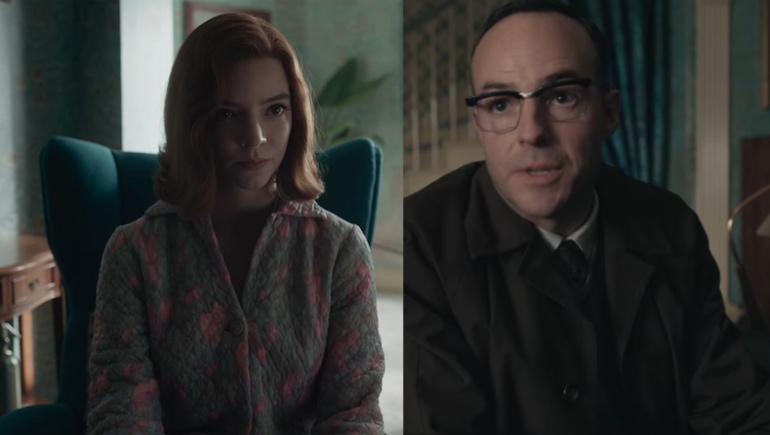
But when Beth pushes back and stands her ground in the argument, the camera angles shift. Now Beth is seen from a much lower angle than Allston was, while he is filmed from much higher above.
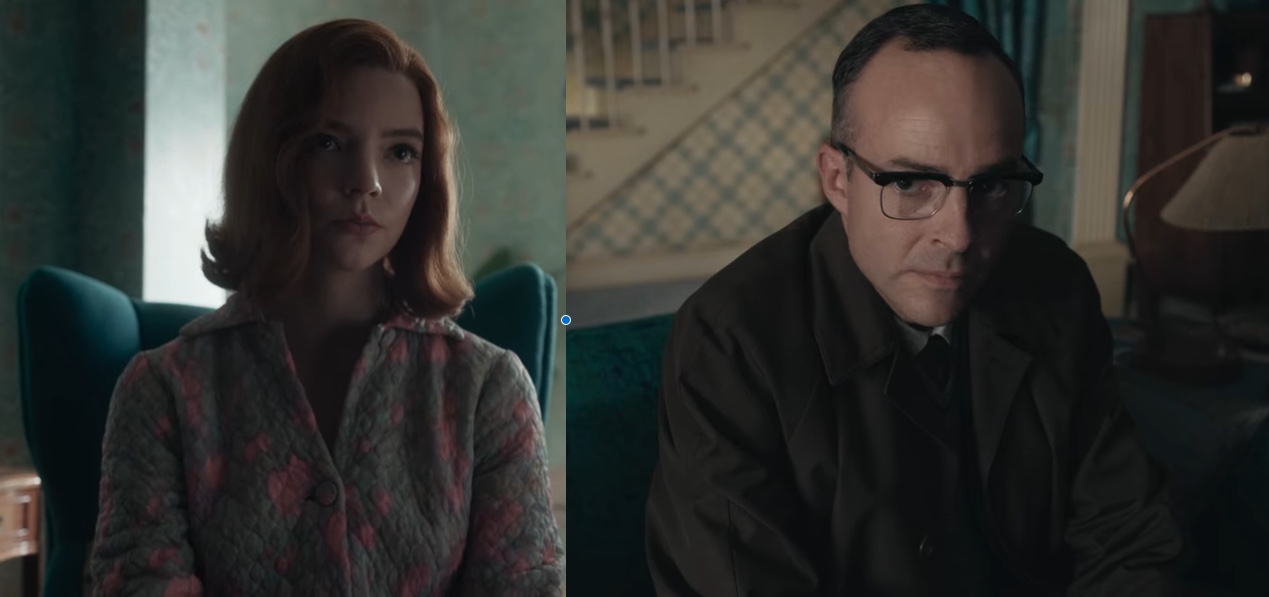
This indicates that the balance of power in their dispute has clearly shifted towards Beth.
(Another series that does this well? The Wire. For example, check out this scene.)
Who Studies Who?
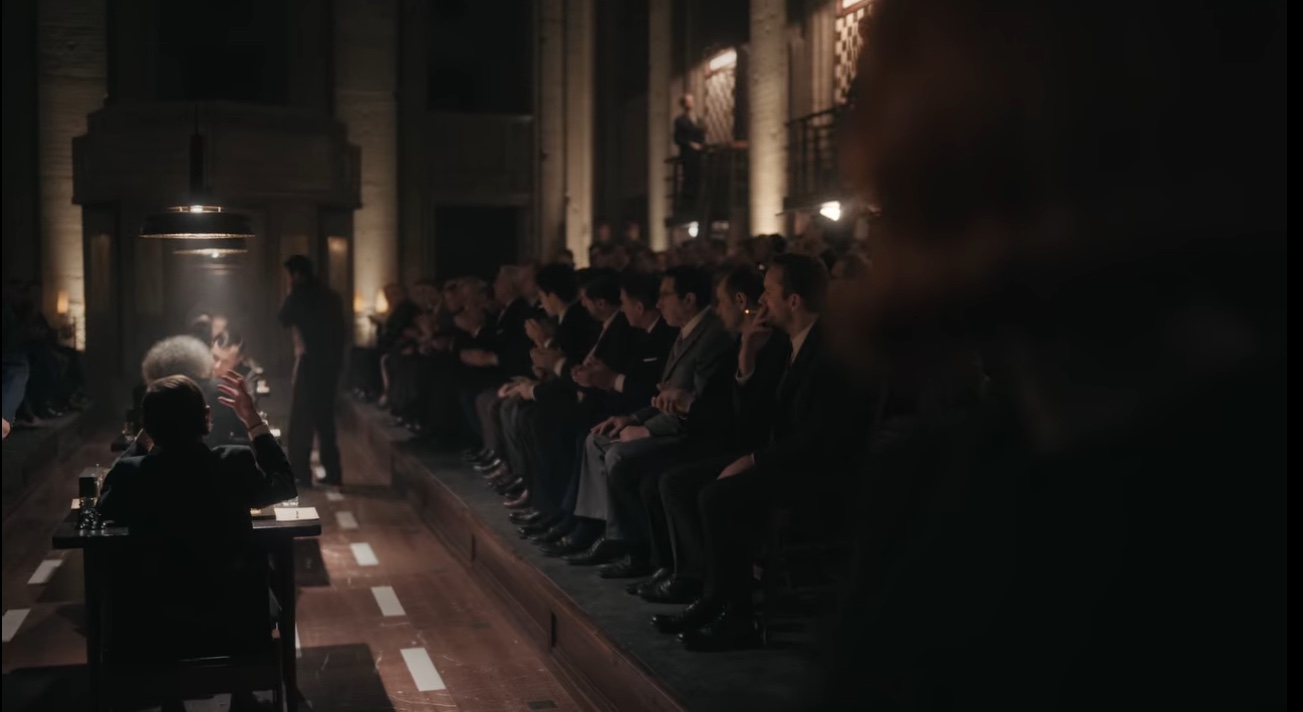
My favorite subtle moment occurs in the final episode of The Queen’s Gambit.
After winning a match against a talented opponent, Beth begins to leave the hall where the matches are being played. As she reaches the exit, she stops, because she hears a chair sliding backward behind her. When she turns, she sees that one of her fellow competitors has gotten up from his own match and walked over to study her game.
This is a telling moment, because it reveals that this opponent is now so concerned about Beth’s prowess that he can’t even wait for her to leave the room before he starts studying to defeat her. And Beth only notices this because of the audio cue of the chair sliding backwards. If she hadn’t heard that — and if she (and we) hadn’t known what it signified — she never would have turned around to witness this moment.
In Conclusion…
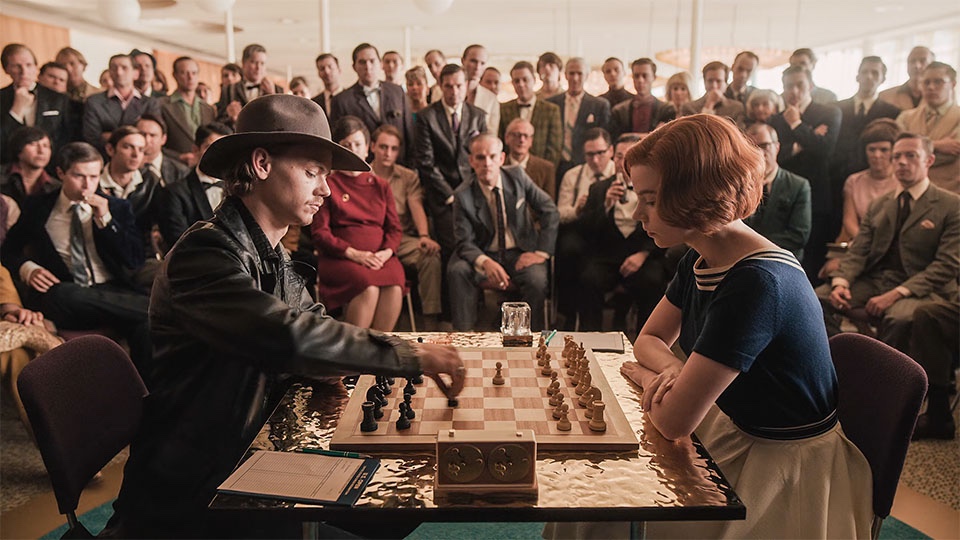
While The Queen’s Gambit is theoretically a drama about about chess, it’s really about the complex emotional conflicts of the people who play it.
Winning the individual chess matches may be important to Beth, but what’s more important to us as viewers isn’t just who she beats, but how. Her victories and defeats — and the lessons she learns along the way — serve as benchmarks while we follow Beth’s tumultuous journey from prodigy to powerhouse.
Not that the creators of the series, or novelist Walter Tevis, skimped on their chess knowledge. Multiple chess professionals have said that The Queen’s Gambit is one of the most realistic depictions of chess ever filmed. This is likely due to the assistance of renowned chess teacher Bruce Pandolfini who consulted on both the original novel and the Netflix series, along with chess legend Garry Kasparov.
So what we do see onscreen is confirmed to be accurate chess, and is even based on some classic matches — including the game that inspired the finale.
Scott and Frank simply had the narrative foresight to not ask us to be grandmasters in order to appreciate the emotional impact of their story about a girl who is saved by chess until she learns how to save herself.
If You Liked This Post, You May Also Like…
WandaVision’s Biggest Question Gets Deep: Who Are We, Really?


0 Comments